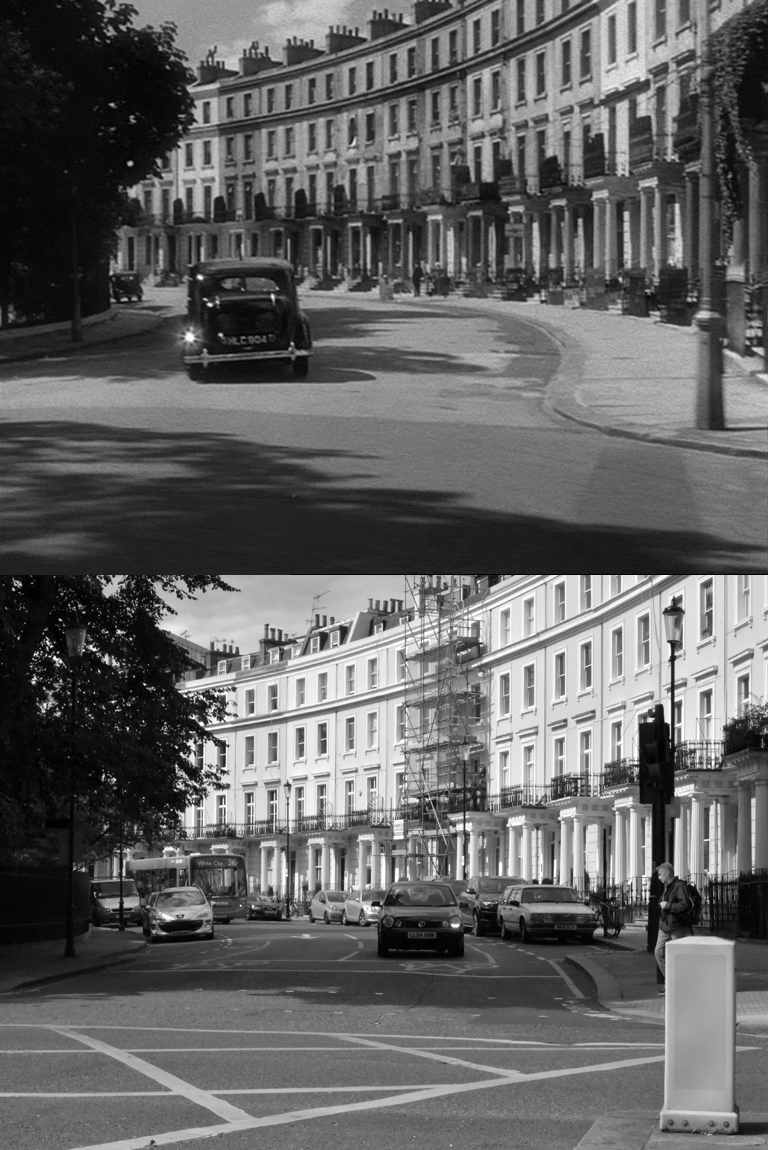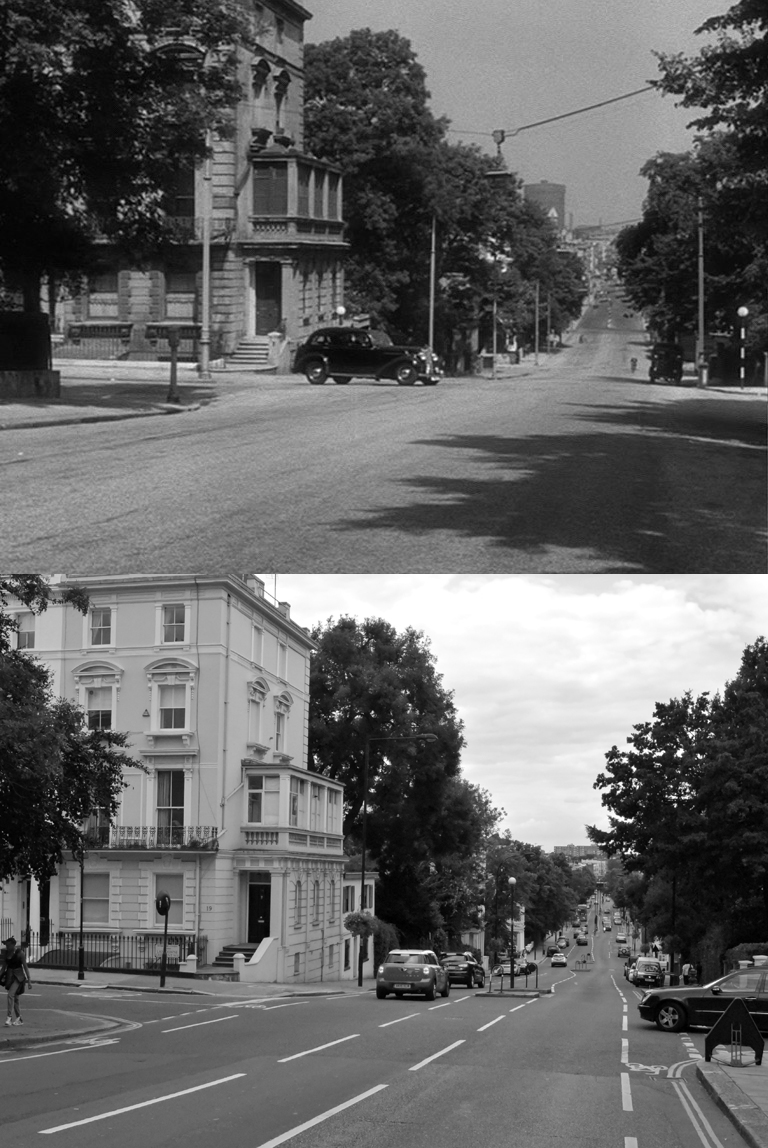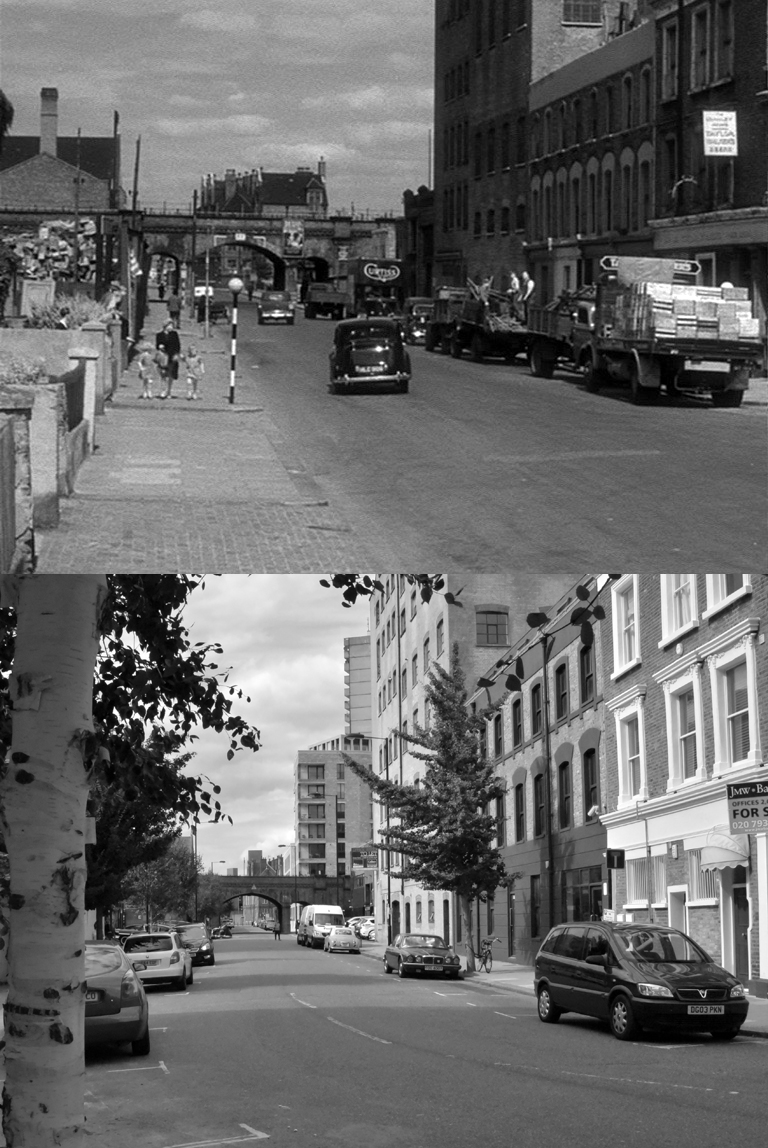In Part 1 I made some “Then and Now” comparison photos for the filming locations in Ealing Films’s The Blue Lamp, mainly on Harrow Road and the Grand Union Canal. In this second instalment, I’ve journeyed further west to North Kensington and areas nearby which were mainly used in the car chase towards the end of the film.

This first shot is located on the junction of Holland Park Avenue and Royal Crescent. The houses are in a pristine state compared to how they looked in 1949, and most of them appear to have had loft conversions too. Traffic seems to have become one-way around the Crescent in the intervening years too.

Looking north here up Ladbroke Grove at the junction of Lansdowne Crescent. It’s difficult to make out many major changes, although a gasometer can be spied in the distance in the original shot – probably on the site of the present day Sainsbury’s at Kensal Town.

On Portland Road, this part of the exciting Police chase is now totally impossible, with a pedestrianised traffic calming area completely splitting the road in two. The trees and street furniture make it extremely difficult to match the original view, but the 30s block of flats at the centre of the shot are still there behind the foliage.

This is the reverse from the previous scene, looking south down Penzance Place. Again the Victorian terraces are looking immaculate, though the houses on Pottery Lane have been replaced with flats.

The chase continues here up Latimer Road, or at least it was Latimer Road at the time of filming. The construction of the Westway cut the road in two, and this section is now Freston Way which doesn’t continue much beyond the railway viaduct. This leaves the oddity of Latimer Road station on the Hammersmith and City (and Circle) line, just to the east of the bridge here, actually being nowhere near Latimer Road. This rail bridge is also the point where a long demolished viaduct connected this line to the West London railway, you can see the last fragment of it if you look on a satellite image.
A change in the junction with Bramley Road means it’s not possible to accurately recapture the original scene, with trees and lamp posts once again blocking the way. I had to use a wider lens than the cinematographer did in order to get the houses on the right in shot, meaning the bridge appears further down the road. The buildings on that side of the road are all very much as originally featured.

The location work moves rather implausibly at this point up to where Hythe Road meets Scrubs Lane. The roadway under the railway bridge appears to have been lowered, which is no doubt helpful for getting the massive car transporters through to Car Giant behind.

Hythe Road on the other side of the railway bridge. The span nearest appears to have been removed from the bridge. I think this shot must have been taken from a crane or the top of a vehicle, as I couldn’t quite match its height.

Another reversal from the previous shot, the old Rolls Royce factory now the Car Giant headquarters. Modern(ish) cladding disguises most of the pre-war design of the building. This whole area is scheduled for massive redevelopment in the next decade, with a combined Crossrail/HS2 interchange being used as a catalyst to transform the whole Old Oak Common area in a similar way to how the Olympic Games in 2012 were used to regenerate the industrial lands at Stratford.

This is Sterne Street, just off of Shepherd’s Bush Green and very close to Westfield. The very high angle was impossible for me to recapture, but the two houses on the right are still the same.

Right at the end of the film the action moves to White City Dog Track, once the stadium for the 1908 Olympic Games. This is Dorando Close, and the offices on the right are a part of the office complex built for the BBC in the early 2000s. It’s still a tree lined street, although clearly these are younger trees than in the original scene.
That’s it for Part 2 – Part 3 will follow at some point, with Edgeware Road and Little Venice featuring heavily!
(NOTE: THE BLUE LAMP IS THE PROPERTY OF STUDIOCANAL AND NO COPYRIGHT INFRINGEMENT IS INTENDED.)
Great photos, as always, really fascinating!
LikeLiked by 1 person
Tremendous bit of work. Thanks.
LikeLike